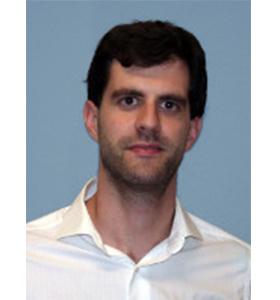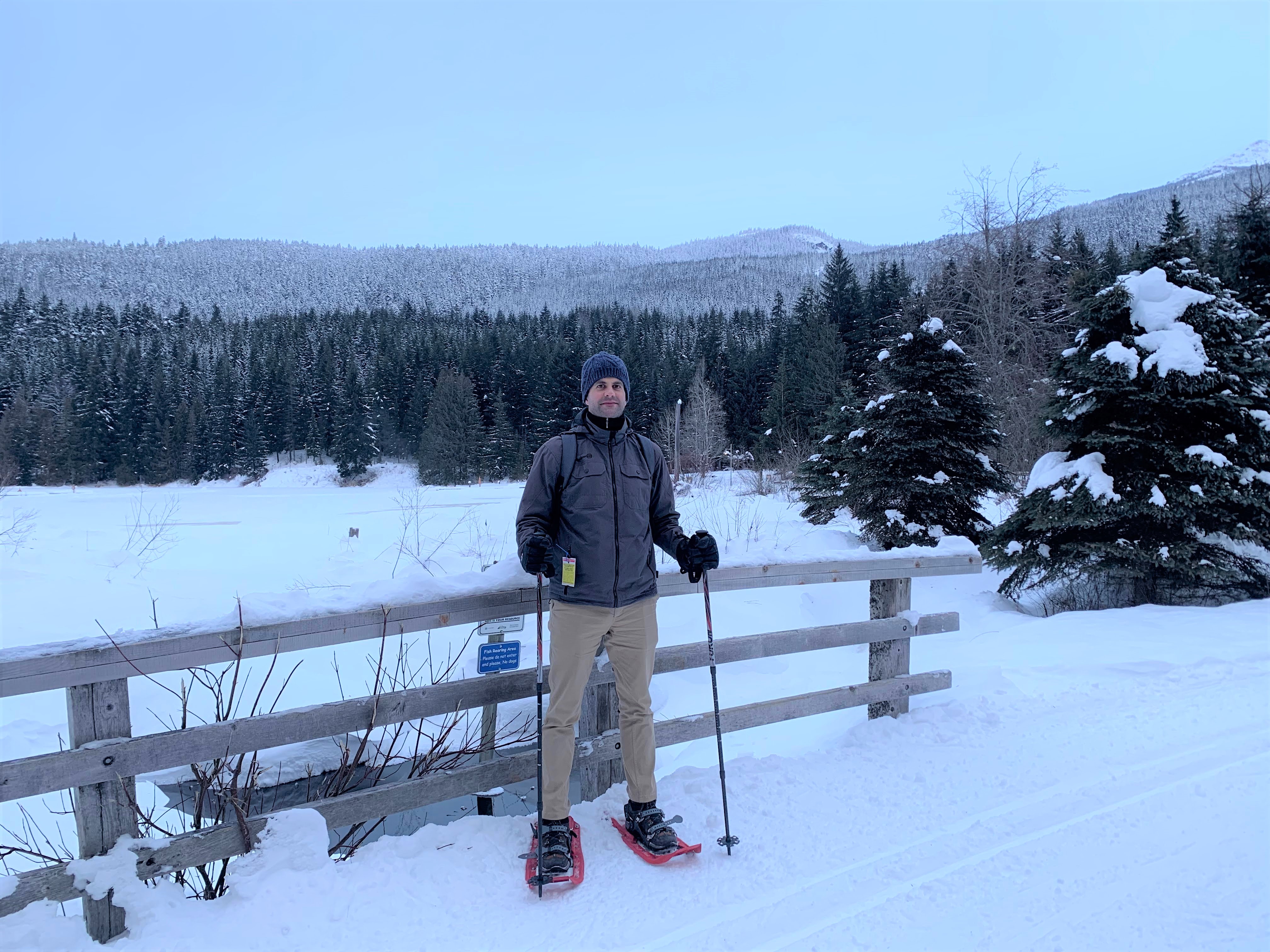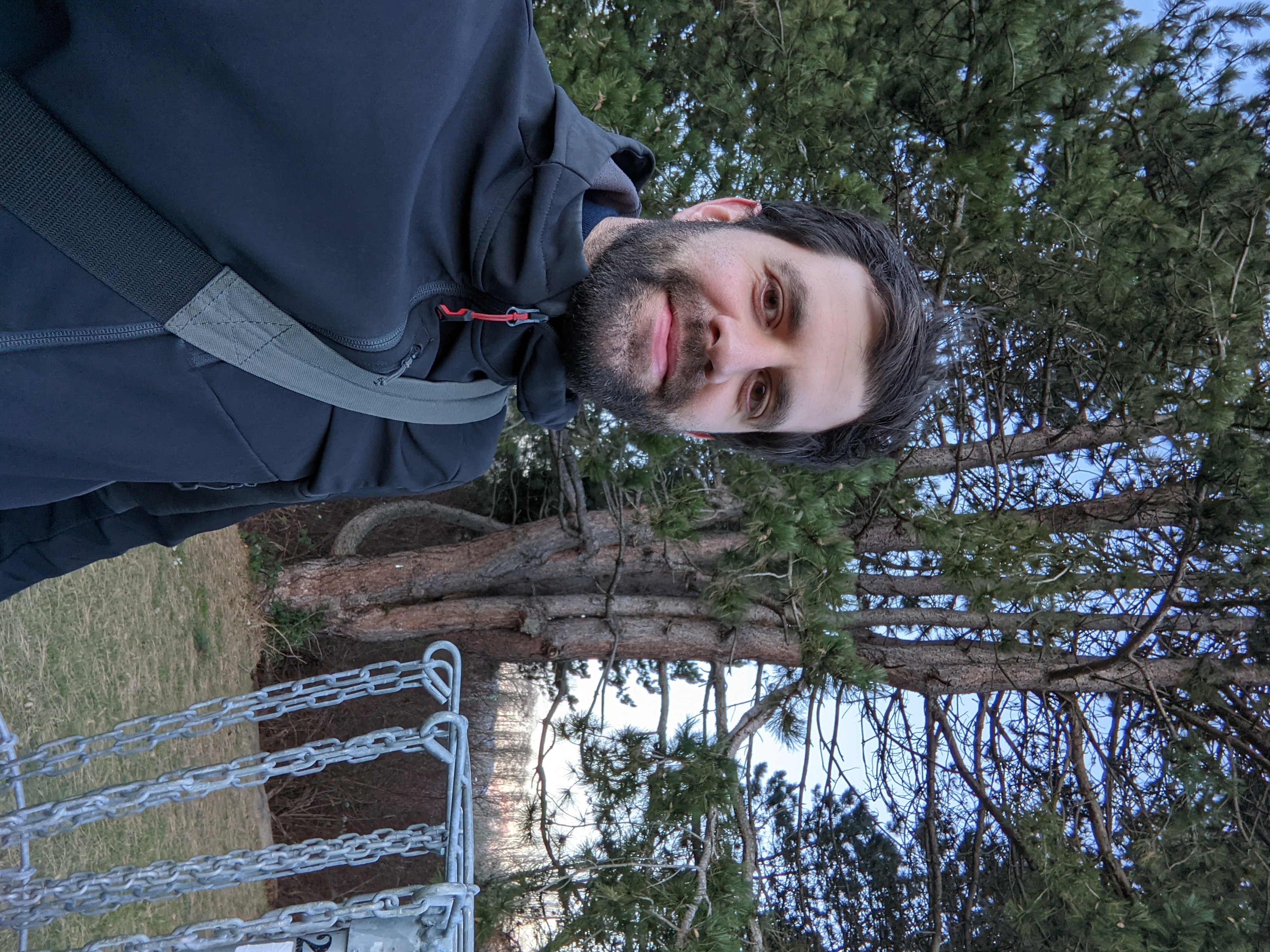“Been in America”: Interviews with German researchers in the USA and Canada

Dr.-Ing. Bastian Wandt
© Privat
(03/24/22) Through its research fellowship program and since 2019 through the Walter Benjamin Program, the DFG supports early-career academics by funding an independent research project abroad (and since 2019 in Germany, too). A large proportion of these fellowships are awarded in the USA and Canada, reflecting the belief -- still prevalent in many disciplines -- that for a career in research it is helpful to have “been in America.” In this series of talks, we aim to give you an impression of the range of DFG funding recipients. This edition take takes a look at who is behind funding number WA 4856.
DFG: Dr. Wandt, thank you so much for taking the time to talk to the DFG’s North American office. Your first name, Bastian, is short for Sebastian – a name that is particularly common in the south of Germany – and your surname, Wandt, appears with the first name Dieter in connection with DFG funding in the field of physics. But you’re not related to Dieter Wandt, are you?
Bastian Wandt (BW): First of all, I would also like to say thank you for the opportunity to speak with you and for the funding that supports my current research stay in Vancouver. No, I’m not related to the physicist Dieter Wandt, and based on what my parents tell me, I was born in the district of Peine, i.e. in the Hildesheim, Braunschweig, and Hannover region – for all those who are not that familiar with Lower Saxony.
DFG: Did your family influence your choice of career?
BW: That’s an interesting question -- I haven’t really considered it before. My father was a policeman until he retired, and my mother was an engineering draughtswoman, so I could have inherited an interest in technology. At school I wasn’t really that much of a high flyer, though I was always interested in science. Even when I was doing my bachelor's degree, there wasn’t much to indicate that I would go into computer science. There was only one course in mechatronics at university and, to be honest, I never considered myself to be a very good programmer. Much of what I did learn I picked up at home, thanks to my father. He’s a passionate tinkerer and IT enthusiast and presumably one of the early users of 386 PCs, so I developed a genuine interest in electronics and data processing at a very early age. So my choice of mechatronics as a subject for my bachelor’s degree was actually predestined and – to pre-empt another of your questions – there were never actually any serious alternatives or other compelling talents as far as I was concerned.
DFG: If you were 20 years older, your inclinations would probably have gone more in the direction of mopeds and motorbikes and your subject of study would have been mechanical engineering, right?
BW: That might be the case, but as it turned out, I tended to leave my moped to one side, preferring to fiddle around with robots – and subsequently shifting from hardware to software, of course. My bachelor’s thesis was about automated forklifts in working environments that also involved human beings. The hardware is essentially already available, but you have to put a lot of effort into the software if you want anything other than slapstick or, worse still, an accident report filed with the employers’ liability insurance association.
DFG: Have the results of your bachelor’s thesis actually been applied and if so, what’s the accident record?
BW: Fortunately, the only accidents to occur have been those that happened in our lab. I can well remember a situation in which the forklift truck unexpectedly turned in the wrong direction and dismantled half of our lab set-up. But since we always had one hand hovering over the emergency stop switch, it was possible to prevent anything major going wrong. Our forklift was purely a research project and was only used to a limited extent in real life, if at all.
DFG: Is your affinity for technology reflected in your private life, too? How might we imagine your household?
BW: The roller shutters on the windows and doors are automated, the heating is lowered at night, the vacuum cleaner is robotic, the lights come on automatically when someone enters the room – that kind of thing.
DFG: So you ended up leaving your largely automated home and set off into the world. What made you decide to go to the Canadian west coast for your postdoc? After all, it is nine time zones away from home in Lower Saxony.
BW: It was exactly those nine hours – I really wanted to get out of Germany, take a look at the country from the outside and polish up my English so that I would feel comfortable in a much more international environment than I was used to in Hanover. Of course, computer science at the University of British Columbia (UBC) is excellent too – it’s probably one of the top ten places in the world, and in my particular field we have Helge Rhodin, someone who made his name at the Max Planck Institute for Informatics in Saarbrücken. His work group is the reason I opted to go to Canada, aside from the time difference and the English-language setting. I’m now a great believer in the value of spending time abroad for an academic career, even more so than when I submitted my application – and I would guess that my current stay abroad will not be the last.
DFG: Your specialist field is the capture and analysis of human movements with a single camera – motion capture or MoCap, in technical jargon. What are the particular challenges involved here and who actually needs this kind of thing?
BW: If people only moved in two dimensions, I could probably get by with a camera for the purpose of movement analysis. For a normal, three-dimensional movement, it would actually be better to have two cameras at some distance from each other, i.e. a stereo perspective. However, stereo is often difficult or impossible to achieve, and parts of the MoCap scene can now be very useful because we’re researching and developing things like machine learning methods, dimensionality reduction, compressed sensing, and deep learning. The areas of application are huge: examples include physical analysis of the forces that act in individual movement segments, for example for the construction of prostheses; sports analysis so to avoid overexertion or injury – or to be a little better than the competition; and ergonomics, so that you too can find out more precisely about how your tennis elbow can’t be caused by all that mouse clicking. Another point worth mentioning is the large field of assistance systems, i.e. the spaces shared by humans and machines. It’s crucial here for the machines to always be aware of what the humans are doing or are going to do, otherwise we’d have another accident report on our hands. There’s also a lot of image recognition involved in this field, and image recognition has a lot of other attractions – quite apart from the whole area of Big Brother surveillance. While doing my master’s degree, I ran a small company in this area with a fellow student. We created production monitoring programs that allowed companies to automate their quality controls a little further.
DFG: Do you still have the company?
BW: No, because we weren’t able to build up a regular customer base in such a short time: the risk seemed too big so we let the project wind down. As things stand now, I’d probably lack the time to run a business successfully while doing my research at the same time. But as I said, it wasn't because of the demand for what we were offering – that’s still at a very high level, I believe.

Bastian Wandt on a weekly hike
© Privat
DFG: You haven’t mentioned Hollywood and the other producers of virtual entertainment worlds who use MoCap technologies. Isn’t that relevant?
BW: On the contrary, it’s extremely relevant and a big market. But, as I said, I’m less interested in the economic dimensions of the applications of MoCap technologies than in the challenges to computer science that arise in developing them. We’re more closely connected to another area, namely competitive sports – but for different reasons. Professional sports in the US, and baseball in particular, are now subject to enormous scientific input in the area of motion analytics, and a lot of stadiums are fitted with excellent MoCap technology. The reason baseball is so advanced is because the guy holding the ball (the pitcher) works from a defined point, just like the guy holding the bat (the batter). This makes it appealing to science because there is less variation in movement than in more dynamic sports. In terms of professional sports, the insights are very useful because they indicate how to make a strike out more likely (what a pitcher wants) or a home run (precisely not what the pitcher wants) by only slightly altering a few angles in your posture. Because innovations are always driven where there is a lot of money to be made, it could well be that at some point we’ll have very good assistance systems simply because the Red Sox didn’t want to lose to the Yankees or vice versa.
DFG: Where do the challenges lie at the moment? Can they be explained to non-experts?
BW: There’s plenty of space for large and expensive camera systems in stadiums, in the case of baseball for example, but the situation is not so straightforward in amateur sports, or in sports where less money is involved. This means that often only a small amount of data is available, if any. Making use of this data, even if it is not optimum, poses a major challenge in terms of current machine learning techniques. If this does become possible at some point, it will open up entirely new areas of application. For example, amateur athletes could analyze their own movements three-dimensionally – and would only need their smartphone to do so. Another example is prosthetic leg wearers, who would be able to analyse their walking movements at home in a quiet environment rather than in a stressful environment with a professional adjuster.
DFG: What’s the everyday life of a postdoc in computer science like and what’s the balance between frustration and success?
BW: The second part of that question I don’t really care to dwell on too much – it’s a ratio of 90% frustration and 10% success, which is fairly common in academic research. On the other hand, the 10% success coupled with curiosity quickly makes up for the 90% frustration. The answer to the first is a mixture of perhaps 20% conceptual thinking – often in pairs or teams and occasionally on the blackboard with dusty chalk – and 80 % mostly coding alone at the computer – in other words, the classic computer scientist cliché.
DFG: Are coffee and soft drinks, maybe even Red Bull, a factor in your life?
BW: Of course -- programming is impossible without caffeine. But that’s about it, because I can’t actually concentrate enough for more than eight hours – occasionally ten – for the results to be meaningful, with or without caffeine. The mind get tired after a while and so does the body, though since I do sports and probably because I’m still relatively young, I don’t suffer from back pain even after a programming marathon.
DFG: You describe your field of work as the “detection of human motion using machine learning under low-level supervision or none at all.” How is it possible to have machines learn without supervision – and is that even something we should be doing in the first place?
BW: It’s not as threatening as it sounds. In machine learning, we distinguish between situations in which we know input and output data, and those where we have only incomplete knowledge or no knowledge. In the latter cases, we’re talking about machine learning under low-level supervision or none at all, which doesn’t mean we’re creating monsters we’d have to pull the plug on at some point. The fact that such a thing is possible at all is shown by the modern generation of programs for games like chess or Go, for example. In this case, machine learning really did take place under low-level supervision or none at all, but geared towards a defined goal – namely to win. As long as we define the goals of machine learning, we don’t need to worry about it and can let artificial intelligence learn completely unsupervised.

In snowshoes
© Privat
DFG: That’s reassuring, but how can you teach a computer program that winning is nicer than losing so that it develops an ambition to win when playing chess?
BW: You’re thinking too much like a human being. The computer doesn’t “know” it’s playing chess. I simply define a target for it by programming – for example, “score 1,000 points!” Each move made then gets plus or minus points, getting a little closer to the target – or not as the case may be. In reality, this is admittedly more complicated and requires a lot of coffee – but it isn’t witchcraft, nor is it anything that experts wouldn’t be unable to understand. AlphaGo, for example – the program that plays Go and that virtually nobody has beaten since 2016 – is based on a series of published papers and you can read about the enormous computing power that went into beating the world’s best human player at this game at the time it was developed.
DFG: So programs that optimize themselves towards a defined goal can now quickly become so powerful that I’d be very reluctant to imagine them in the wrong hands – is that true?
BW: Yes, that’s certainly a risk involved, but it’s a Pandora’s box where I have my hands firmly on the lid – and that’s just two hands out of thousands. It is a fundamental problem of basic research that new tools could potentially be developed from new knowledge where control of the application might be far removed from the original research itself. Nonetheless, banning people from pursuing basic research can’t be the solution to the problem.
DFG: As Germany’s leading funding agency for basic research, we certainly wouldn’t want to contradict you on that point. Your current work on the capture and calculation of human postures often relates to sport climbing. Are you a climber yourself and if so, where do you go climbing at the moment?
BW: Yes, climbing is fascinating mainly because the movements are difficult to analyze. Think of Alex Honnold. He climbed El Capitan in Yosemite National Park without technical aids and without belaying, but moving his body in a way that would be easier to reconstruct for a spider than for a human being. I’ve been a very ambitious climber for many years myself, so I’m really interested in gaining a better understanding of climbing movements – not just from a scientific point of view but out of personal interest, too. In fact one of the main reasons I feel so comfortable here in BC is the wide range of mountain sports available.
DFG: It sounds like you won’t get bored in British Columbia outside of your research. What are your plans after your current postdoc in Vancouver?
BW: First of all, I still have plans in Vancouver. For example, there’s a piano in my rented flat that would like to befriend me – though I’m not sure yet whether the feeling is mutual. I live barely ten minutes’ walk from the beach here, which also has its charms. I’d hardly got here when an elderly lady with a dog came up to me in the street and told me – without me asking – that the light on the beach was wonderful and that I should be sure to go down there. That’s just what the Canadians are like – really nice and friendly. It’s fun to be here and have such beautiful natural surroundings on your doorstep. But as for my career plans: since I’d very much like to stay in basic research, the path is actually already mapped out for me: a junior research group leader position leading onto a professorship. I'd also be attracted to teaching – the challenge of simplifying and explaining things in such a way that students can gain an understanding, with questions indicating the progress they make in terms of understanding and learning. I’d prefer to have all that in Germany, if only for the sake of family and friends, but I wouldn’t really want to commit myself at the moment. In Germany, the strongholds in my discipline are currently in Tübingen and Saarbrücken, but in the US there are many more places, especially on the coasts. Then there are the large companies such as Google and Facebook, of course, where excellent research goes on too – though without teaching and not driven purely by curiosity.

At a disc golf basket
© Privat
DFG: Besides the friendly nature of the Canadians and the beautiful landscapes, what else would you put on the plus side of Vancouver-- or to put it another way, what will you miss when you’re no longer in Canada?
BW: Canadian friendliness is so contagious that German directness -- saying right out what you don’t like – can quickly fade into the background. In terms of my own experience, it means that I no longer have the heart to tell a Canadian who wants to get me interested in poutine that I prefer kebab or curry sausage. Poutine is a dish that consists of French fries, so that’s a good start. But unfortunately they’re soaked in gravy and have a crumbly topping made of bad cheese, so it’s not exactly haute cuisine. Neither is kebab or curry sausage, of course, but that’s what I grew up with. Then again, Canada is justifiably proud of maple syrup in all its varieties. That’s something I’ll definitely miss. Something I probably will take away with me from Canada is playing disc golf, which is a great leisure activity. Rather than having a bag of clubs which differ in length, you have different Frisbees with you, some for long distances (drivers) and some for putting, i.e. landing the Frisbee in a basket. I discovered the sport when my left shoulder was injured so I couldn’t climb for a while.
DFG: One final question: what is it that makes you laugh?
BW: I have a penchant for situational comedy, so that probably puts me in good company with a lot of people who aren’t computer scientists. Computer scientists themselves have a number of specialized areas when it comes to humour – such as creative comments inserted by other programmers in the margins of program lines. The main purpose of annotations next to program lines is to help us retrace our steps – even several weeks later – so we are reminded of what we were doing and what our thoughts were. Since programming is not always a team sport, there are also debugging methods such as so-called rubber duck debugging, where each line of the program is explained to a squeaky duck on the desk – something that can seem very strange to outsiders.
DFG: In that case, we’d like to thank you once again for your time and we wish you a great time in Vancouver, a productive research stay and all the best for the future.